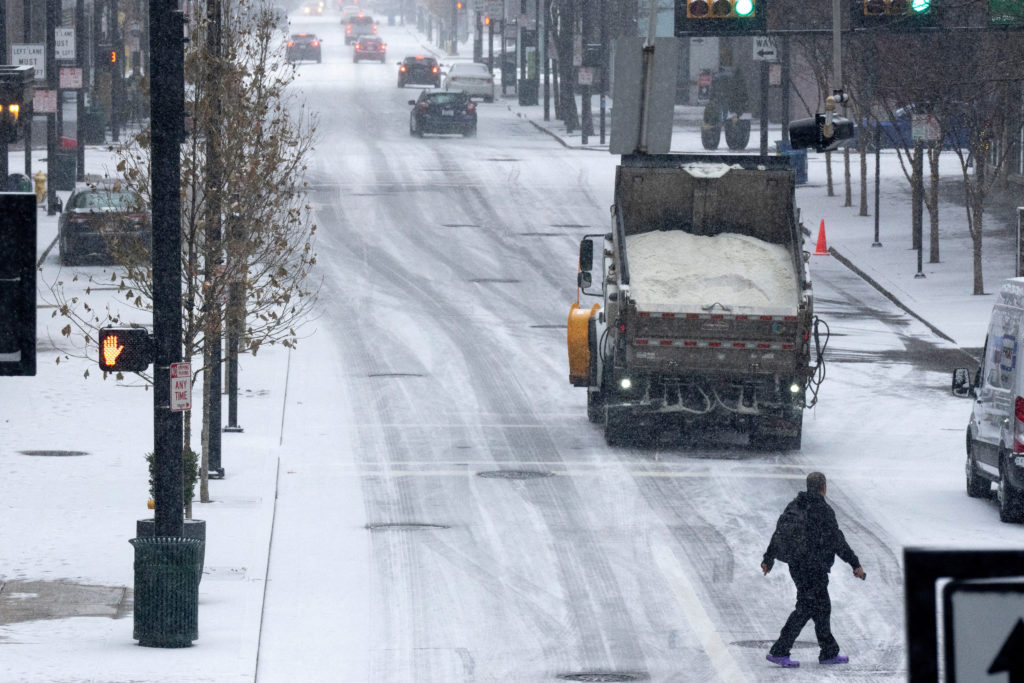Florida is facing its largest winter weather episode in years as a polar vortex forces dangerously freezing temperatures, snow, and ice across multiple counties. The National Weather Service has placed freeze warnings across 17 counties, and in some locations windchills will plunge to as low as 10 degrees Fahrenheit. Today, we will discuss more about Florida freeze warning polar cold front.
Multiple Freeze Warnings Blanket Northern Florida
The National Weather Service has issued extensive freeze warnings covering counties including Levy, Citrus, Suwannee, Baker, Nassau, Union, Bradford, Gilchrist, Hamilton, Alachua, Clay, Columbia, Duval, Bay, Franklin, Gulf, and Walton.
Subfreezing temperatures are expected to dip as low as 25 degrees Fahrenheit in many areas. Wind chills could reach 20 degrees in the Panhandle, posing significant threats to people and property.
State of Emergency Declared for Winter Weather System
Governor Ron DeSantis declared a state of emergency on January 20, 2025, through Executive Order 25-13 in preparation for the Gulf Winter Weather System.
The order triggers emergency response protocols as a low-pressure system progressing across the Gulf of Mexico intersects with Arctic air. Winter Storm Warnings have been issued for the western Florida Panhandle, extending eastward along the I-10 corridor.
Understanding the Polar Vortex Phenomenon
A polar vortex is a stream of cold air that normally spins around the poles high in the stratosphere. When this system becomes unstable, it allows frigid Arctic air to spill southward into the lower 48 states.
The current system is among the most significant polar vortex events to impact Florida in years. Meteorologists are describing the current conditions as equivalent to “January-like” temperatures across an area that is typically winter-ready and extremely mild.
Record-Breaking Cold and Snow Forecast
The Panhandle is facing the brunt of the conditions, where snowfall amounts of 1-3 inches are expected throughout the region. Some locations could experience locally higher amounts of 3-4 inches where heavy snowfall rates develop.
From freezing rain and ice accumulations,the potential danger to the overall area has to do with the ice accretions. Forecasting calls for ice accretions of 1-10″ to 1/4″ from the eastern Panhandle through the Suwannee River Valley.
Counties Under Multiple Weather Alerts
The breadth of weather warnings shows how truly rare this event is:
Freeze Warnings: Temperatures below 32 degrees for several hours Cold Weather Advisories: Wind chills between 20-30 degrees
Winter Storm Warnings: Snow, sleet, and freezing rain expected Extreme Cold Warnings: Life-threatening temperatures in some areas
Wind chills in Santa Rosa County could be as low as 22 degrees, with localized impacts in Okaloosa and Walton counties.
Agricultural Impact and Economic Concerns
Extreme cold is making things very difficult for Florida’s agricultural producers. Florida’s citrus industry has just begun to recover from the damage caused by Hurricane Milton; the chilling temperatures come as another stressor to an already vulnerable crop.
While little initial property damage has been reported, at least as of this writing, it appears the bulk of Floridian citrus crops have escaped catastrophic damage with crop temperatures remaining above critical temperature thresholds in the growing regions. Other plants such as sugarcane may not be so fortunate.
Florida’s 2024-25 orange production estimate is already down 20% just from hurricane-related damage. With the polar vortex, the implications just keep piling up for farmers and for consumers facing a sharp increase in food commodity prices.
State Emergency Response Measures
Florida Division of Emergency Management activated the State Emergency Operations Center (SEOC) to Level 2 on January 21, with state agencies collaborating on a daily basis with each of the 67 counties to assess all capabilities and needs for the impacts being assessed, while providing for the efficient use of response capabilities.
The Florida Highway Patrol (FHP) activated 150 State Troopers (ST) of its own in the affected portion of the Panhandle. Ten (10) skid steer road clearing tractors have been pre-staged, and chainsaw teams are ready to fuel and head on-station based on known area impacts.
The Florida State Guard (FSG)is prepared to assist with assessment and possible operational deployment for the incurred winter weather impacts. The FHP activated three(3) aviation assets that were pre-staged for emergency operations.
Health and Safety Warnings
The severe cold weather poses extreme health dangers and hazards, particularly to vulnerable groups. “Wind chills hitting -10 degrees could cause frostbite in exposed skin in as little as 30 minutes,” the National Weather Service warns.
Emergency officials emphasize the “5 P’s of Cold Weather Safety”:
- Protect People: Dress in layers, wear hats and gloves
- Protect Pets: Bring outdoor animals inside or provide warm shelter
- Protect Plants: Cover cold-sensitive vegetation
- Protect Pipes: Cover pipes and allow faucets to drip slowly
- Practice Fire Safety: Use safe heating sources indoors
Transportation and Infrastructure Concerns
Tuesday afternoon into Wednesday, hazardous driving conditions can be expected; the biggest risk to roadway travel will be ice accumulation on the roadways, bridges, trees and power lines throughout North Florida.
The Florida Department of Transportation is prepared to mobilize snow plows and equipment if the forecast calls for road and bridge safety needs. State officials inform that bridges, overpasses, and elevated surfaces will be particularly treacherous.
Wildlife Protection Efforts
The bitter cold puts pressure and threat to Florida’s wildlife population as well. Florida’s Fish and Wildlife Conservation Commission reminds everyone about ways to protect animals during the cold temperatures.
Manatees will find warm-water refuges, like springs and warm-water discharge areas at power plants. Water temperatures dropping to 50 degrees Fahrenheit or below can cause a sea turtle to become cold-stunned.
Please report injured or distressed marine life and animals to FWC’s Wildlife Alert Hotline at 888-404-FWCC (3922).
School and Business Closures
The Florida Department of Education is keeping track of the winter storm and has been in communication with affected school districts. Some counties have decided to close schools due to extremely dangerous travel conditions.
Cold weather shelters are open in each of the affected counties. Residents are encouraged to monitor FloridaDisaster.org/Counties for updated information regarding county-specific resources and emergency contacts.
Historical Context and Rarity
Florida experiences severe cold outbreaks at least once per year, but this event’s intensity stands out. During the harsh winter of 1989-1990, 26 Floridians died of hypothermia.
What is now referred to as a polar vortex carries the type of Arctic air that travel to Florida only once or twice a year when it brings snow to Pensacola, which tested its patience since it had not seen snow in a decade and accumulated one inch of the snow in this weather system.
Looking Ahead
The extreme cold will last throughout the week before beginning to moderate, but forecasters tell us there may be more polar vortexes in the future, which could continue to prime us for other far-reaching impacts in 2025.
While climate experts advise that interrelated weather events cannot be tied directly to climate change, the dislocation of the polar vortex that enables severe cold temperatures does align to some of the patterns tied to a changing climate system.
Residents are encouraged to continue to monitor information from the official weather sources and to avoid traveling during the most severe conditions if it is not necessary.
Disclaimer: This information on Florida freeze warning polar cold front comes from official weather forecasting, government declared emergencies, and verified reporting from the National Weather Service in conjunction with Florida’s emergency management agencies. Weather flying toward us can change rapidly. Residents should pay attention to local forecasting and rely on guidance from official channels.

